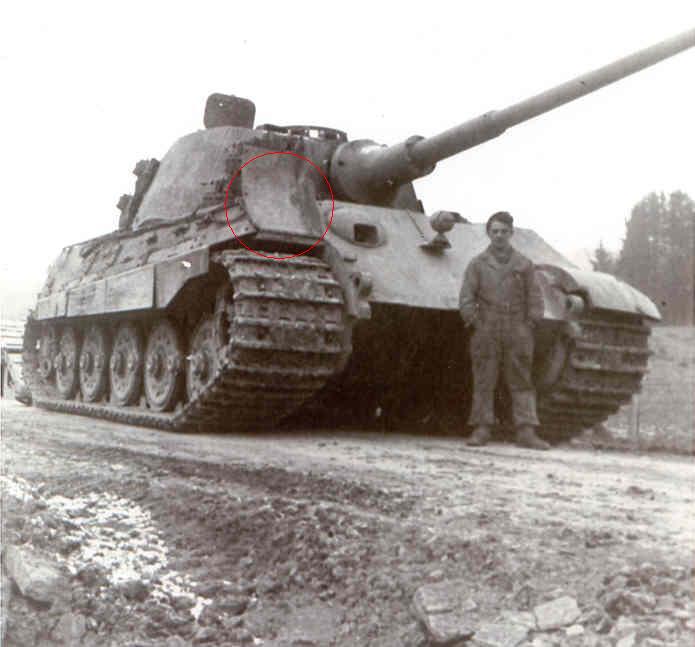The story goes like this: the leading Sherman of 740th Tank Battalion, commanded by one Sergeant Glenn George, hits Tiger 332 (SS-Unterscharführer Otto Blase) on the upper edge of the right front plate. However no armour-piercing shell was used but an HE shell (phosphor? - at least that’s what I read). The Germans assumed their tank started burning and they abandoned it.
When the US forces captured it the tank would have been fully functional, with only the tracks frozen to the ground.
It was in the right side after all. It could be a hit with WP = white phosphorous.
It was a common US tactic to hit the superior German armor with white phosphorous before switching to AP in order to rattle the crews and blind them, often preventing their counter fire…
Well considering your in a Sherman and the other guy has a much bigger tank and gun, I think that tactic was pretty good. Gave you time to either get your tank behind cover or bug out.
I’m sure our tankers were very mindful of the few, but very powerful, tanks the Germans had. And none of them wanted to be the bait to catch a tiger.
Deaf
count me in Tiger 2…it is a perfect battle gear 
Every trick was fair game in a Sherman vs Tiger, the armor/power disbalance in favour of the german design was too great.
Rare film, in here the propaganda kompanie has mountes its camera above the KwK 36, a sort of Tiger guncam.
http://www.youtube.com/watch?v=YJp-qvBMnqE

Too bad,the video seems to have been removed by the user,was hoping to see it.
Yes, I did, I was unhappy with the quality of the clip in Youtube, pretty “pixelated”.
You can see the original video here:
Thanks,interesting clip.
thanks from me too Panzerknacker really rare and interesting video never saw it before . 
Impressive! its interesting to how much is enough in terms of firepower.
Yes ,it’s interesting,but a stationary target at maybe 200 meters and at the side,wonder why they didn’t shoot straight on?
they were probably doing a methodical test of what it takes to kill a tiger, much like present day front, side, and corner crash testing of automobiles. we were just seeing the “side impact” part of it. Just a guess tho…
Probably the test was more targeted to find the performances of the 17 pounder gun of jagdpanzer Archer. Interesting the face of the smoking soldier pointing out the holes, he had the expression of “we finally did it”…piercing a Tiger I that is. :rolleyes:
interesting indeed from a dead point of 200 meters it looks that Tiger have no chance of survival and the angle of shooting is important too i think , maybe with bigger distance and various angles the Tiger would react differently .
Absolutely Ivaylo,it definitely would be a different outcome if the distance and angle were different(actual combat conditions)but I agree with Tankgeezer as it just was a test under perfect conditions to “test” their firepower,but there are rarely perfect conditions when in actual combat,again though a very interesting video.
vote for Tiger Tank II
Best tank of WW2 in terms of sheer firepower and sturdiness…mobillity is another matter…
Looking at the footage, I see several side hull and turret penetrations and some front hull penetrations, but no front turret hits or penetrations.
I gather from looking at Jentz book on the Tigers that no penetrations were likely until the enemy tank got to within 100-200 meters except the 122mm which could penetrate the front turret mantle area @ 500m range.
The front turret has an overlape of the 100mm mantle and 100mm front turret or about 200mm on the mantle area around the gun. In practice I understand that while these add up to ~ 200mm LOS, they resist something like 14-16cm due to the effect of hits near the ‘free edge’ of the mantle or where ‘weak spots’ like MG and optical ports are. These are always less resistant than the same LOS armor thickness with out the weakspots.
If your facing these tigers that are in hull down defensive positions, the only area exposed is going to be that front mantle area.
It was a hulking White Elephant that sapped resources for more useful, flexible tanks…

